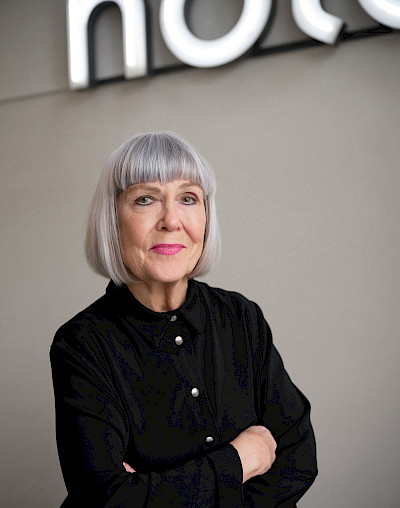Design Icons, or Iconoclastic Designs?
2021–01–29
2021–01–29
When it comes to outdoor furniture, comparing products made for public space environments with those designed for privately-owned areas is like comparing apples and pears, writes Agneta Stake, Nola’s founder. In a debate with Ib Morgensen, director of Danish furniture manufacturer Out-sider, Agneta rejects the claim that Swedish public spaces lack contemporary classics. In the paragraphs that follow, Agneta reveals that iconic design is a question of context more than a statement of style. Agneta tells us that iconic design isn’t always hard to find; we just need to know what to look for.
We, as private individuals, may choose to furnish our homes and outdoor areas with products from well-known designers. But when it comes to outdoor public spaces, we have to consider that they have been shaped by different perspectives, and according to different needs. It’s those needs that I’ve been addressing since the early 1980s, when I began working collaboratively with architects. Together, we set out to bring quality design and sustainability to public sector environments. At that time, there were hardly any public space environments where a celebrated designer or star architect had made his or her mark.
Slowly, interest in new types of public space furniture began to grow, which was noticed by professionals who would later become pioneers in the area. Together with mavericks such as interior architect Arne Nilsson in Stockholm, Olle Andersson at White in Gothenburg, landscape architect Ulf Nordfjell at BSK in Umeå, and Carl-Fredrik Wachtmeister, the chief landscape gardener at the City of Stockholm, Nola created new products for some of the most ground-breaking public projects in Sweden.
Examples include the designs created for the redevelopment of Kungsgatan and Sergels Torg in Stockholm, products for Söderhamn's new commercial district, seating for Motala's new commercial centre and the outdoor furniture made for Kungsträdgården park in Stockholm. Nola was also invited to develop products for transportation sectors, designing products for the platforms at Stockholm’s central train station and furniture for the new domestic terminal at Arlanda International Airport. A number of these products received awards from Swedish Form, a national association who encourages design excellence.
Creative collaborations with designers and architects continue today as they work with Nola to furnish public spaces. Together, we can make a difference without setting out to create icons or future classics. Our products always put form and function in focus while meeting the needs of those who use public space. The products that result are always well-suited to individual spaces, and they meet real human needs.
Recent case studies include design collaborations with architects such as White, Urbio and TAF, as well as with groups and individual designers such as Front, Claesson Koivisto Rune, Veryday, Monica Förster, Nina Jobs and Thomas Bernstrand. They have all created excellent products that promise to leave lasting impressions on the environments they’re placed in. One of the most rewarding recent collaborations between architects, local residents and Nola resulted in the Långbordet modular table and seating design, created by a project team led by White. It meets the need for creating places where people from different backgrounds can meet and integrate, providing a space where they can share experiences and points of view.
Here at Nola, the design classic concept is much broader than making an iconic shape. To us, the concept includes products and furniture that help people live their lives better, facilitate their everyday, and enhance the experience of being outdoors. The products are sustainable over a long period of time while remaining beautiful to look at. There are plenty of such products around. When we take time to look for them, they’re always easy to find.

Agneta Stake, Nola's founder and head of design.